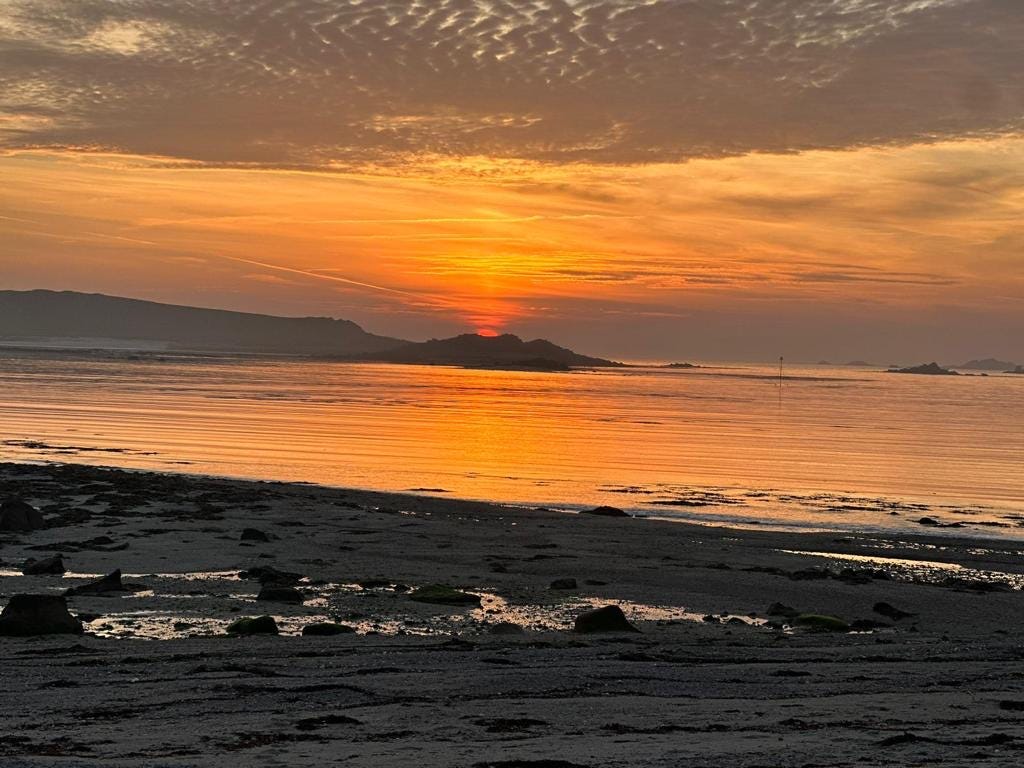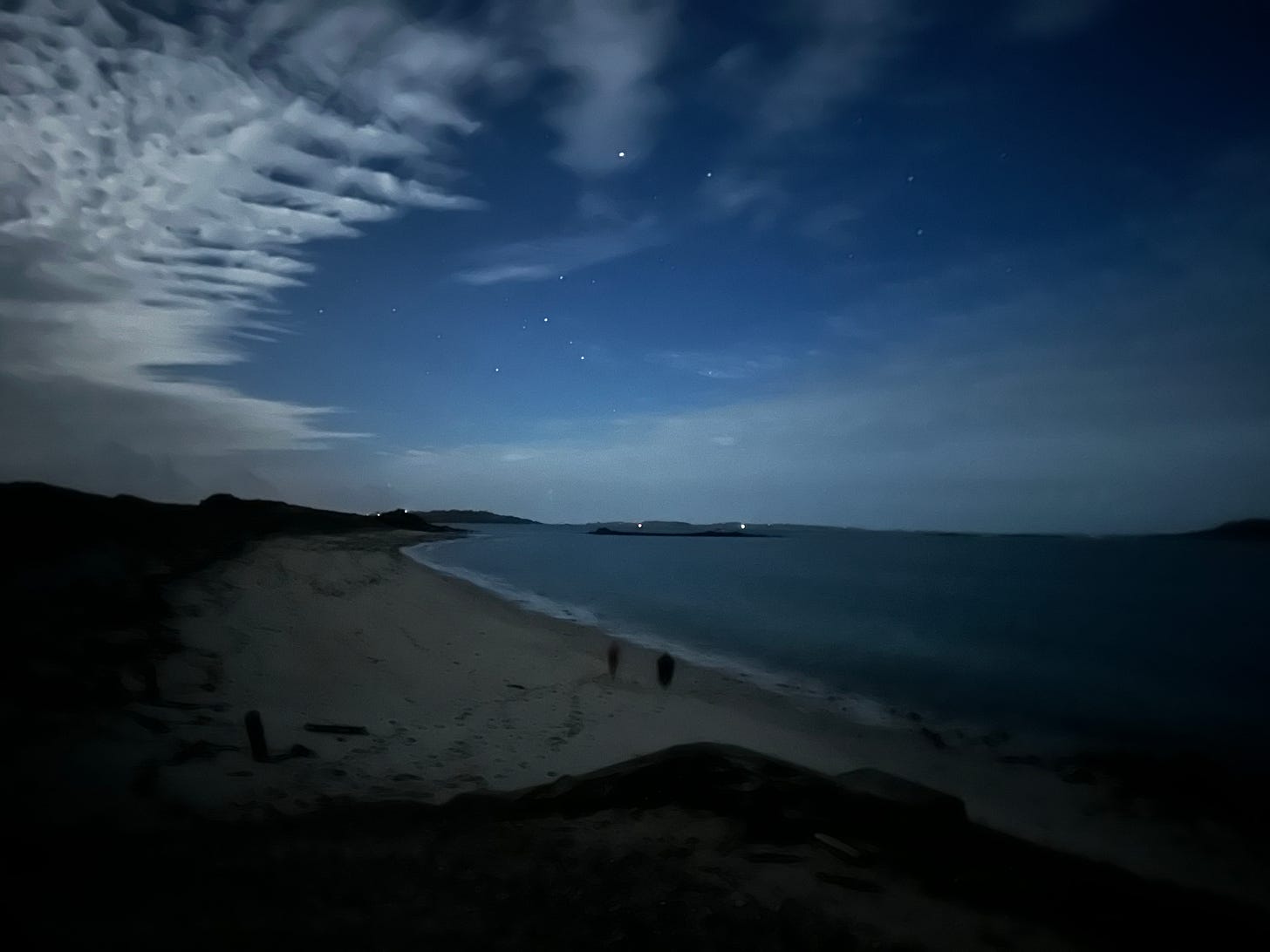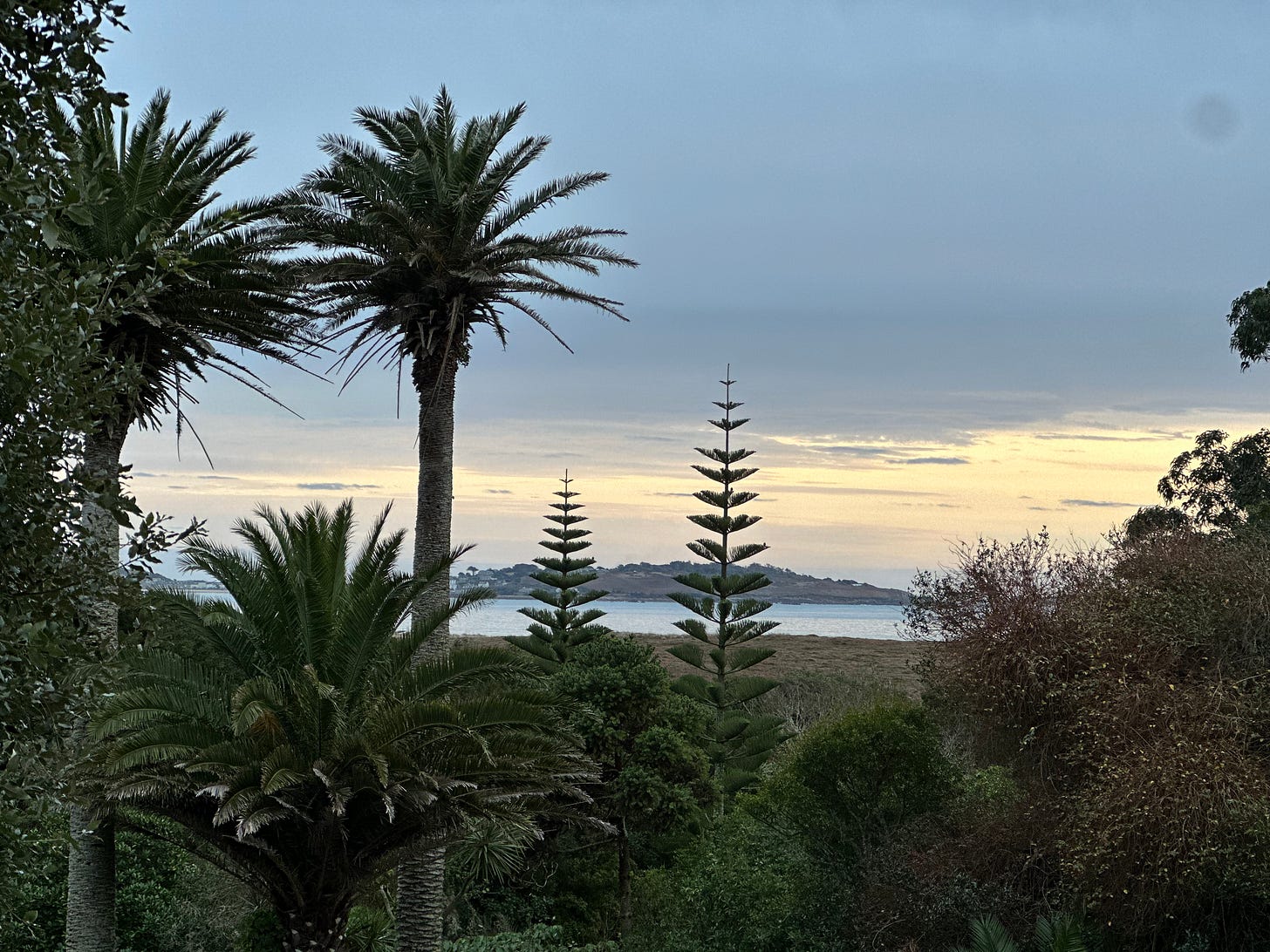Tresco covers approximately 1.15 square miles in area so it will come as a surprise to no one that I’ve never lived so close to the sea. I have never been able to empathise with people who talk of their need to live near the sea. This is because I have never understood that physical proximity comes hand in hand with a mental proximity, connection, symbiosis.
Life on Tresco is governed by the sea. In winter, the Scillonian ferry does not travel between Penzance and St Mary’s, meaning people are reliant on planes and helicopters to get to and from the islands. These are often cancelled or delayed by weather conditions. Freight ships do bear post and food from the mainland, but when storms descend these too get cancelled, and it is not unheard of for islanders to resort to tinned food in the depths of winter. Even in summer, travel between islands is restricted to the date and time of scheduled boat departures, unless you have your own boat or are willing to surrender your destiny to a kayak (or a gig row boat with a port-drunk crew in the dark).
The time for sea swimming, meanwhile, is decided by the tide. One constant is the rise and fall of the tide twice in the course of each day. It is wise to go swimming when it is on the higher end of this semi-diurnal cycle. Should you choose to disregard this rule, a swift reminder of why you’re usually so influenced by it will present itself once you’ve spent five full minutes wading out shiveringly towards the horizon, only to find you’re still submerged to half calf level and, in a fit of cold and despair, your crocs now indistinguishable from the rocks on the sand half a mile away, you hurl yourself down seawards and starfish miserably on your tummy for a few seconds before heading back to shore.
~ On sea swimming ~
I was determined to begin regular sea swimming when I arrived on Tresco. I’d had conversations with various brine-plunging enthusiasts and it felt like an important new depth to plumb. I wanted at least to prove to myself that I actually hate sea swimming before loudly becoming someone who does not swim in the sea.
On my first afternoon on the island I made the niche decision to ease myself in gently by biking to the small and fairly well concealed outside pool. I had to steal myself for that swim, even in a shallow and unmoving body of water that had received months of summer warmth. From there, in the sunny October afternoons after work, I’d often bike to the shore to throw myself into the water. The experience was exhilarating in its freezingness, in its beauty and in its privacy: just me and one of the several stunning beaches of Tresco, devoid of people by that point in the year. Swimming out into the impossibly gorgeous horizon was a helpful reminder of how small I am and how nothing matters that much and how I’m nowhere near off licences anymore so I should just stop thinking of them as an option, etc.
I still remember those early swims, though, as much more challenging than swims I’ve taken on a weekly basis in the depths of winter. It is not clear why. Early into our studentship we were discussing the relative pros and cons of swimming through the year and Hannah advised that winter swimming is often “so definitely not going to be nice” that it beats summer swimming, which is inevitably also excruciating but claims not to be. Or perhaps with every swim I have been hardening myself off like a tender young plant being gradually coaxed outside, myself gradually building up tolerance to cold water with increased exposure therapy. Or perhaps I’m simply remembering my experiences of those first swims wrong: I’m now so used to the shock of the initial plunge that each logged memory feels less dramatic in my mind.
It’s undeniable that there’s always strength to be found in getting in. This is perhaps what makes the whole experience so therapeutic. It’s a proving to yourself, on a microcosmic level, that with determination and a small/large dash of hysteria, you can do the difficult thing you’re scared of doing. It’s also such an elemental experience, especially on those days of howling winds and choppy swells, or those evenings of breathtaking orange and magenta sunsets, or those nights of silver, still and stars. The sea is so mutable and borderless that throwing yourself in it sparks an intoxicating feeling of limitlessness and liberation.
Kate leant Harriet the book Swimming with Seals by Victoria Whitworth. After she read it, Hannah read it, and after Hannah read it, I read it. It’s about the author and her love of sea swimming, particularly as a way to help heal health problems as well as to cope with various life traumas. At some point in the book, Whitworth writes ‘it occurs to me that I do not know anyone who has started sea swimming and then given it up’. I would recommend it for those feeling robust enough to digest quite a lot of pain.
I think, though, that sea swimming can also often be therapeutic in its silliness. Flapping towards the sea on a bicycle in the middle of a storm with a towelling robe billowing out behind you to dip yourself in sea for a few minutes is quite silly, as is pedalling back and having to wash your sandy feet in the kitchen sink so you don’t tread sand through the house. We’ve recently had a run of garden volunteers, each with us for a few weeks at a time, and it has been fun to cajole them into the cold with us, whether they have brought a swimming costume with them or not. After which we frogmarch them to the nearby sauna and shoot the shit while everyone becomes increasingly sweaty and beetroot-flushed. It’s a great way to force everyone into quite a vulnerable state and thereby break the ice. There’s also always the quite silly option of skinny dipping under the light of the full moon. Or skinny dipping after the pub closes – kudos to the two garden volunteers who recently did that.
…But back to why every day life here is completely swayed by the sea. On a day of particularly low tide, you might decide to go rock pooling to spend some hours marvelling at the complex aquatic micro universes living under each rock. Twice a year, the tide gets so low that it is possible to walk between Tresco and Bryher – and the inhabitants of the two islands gather in the middle to drink, eat and partake in general conviviality.
In spring or summer, you might go on a wildlife boat tour to spot seals, dolphins, porpoise and puffins, and their fluffy puffling babies.
Gig rowing is a long-standing tradition on the Isles of Scilly and in Cornwall. This involves getting yourself from A to B in a wooden boat that looks a bit like a Viking ship. Unlike normal rowing, there are only six seats and they are fixed rather than sliding. Originally, pilot gigs were used as lifeboats to rescue ships needing help, but today they are mainly used for competitive sport. Many racing events take place over the course of summer, the biggest of which is the World Pilot Gig Championships. I appear to have found myself in the B team boat for Tresco and Bryher women, which means I’ll get to participate in these “gig champs” in May, alongside about 150 other boats. It will be a huge privilege to be included.
Even the plants in the garden are determined by the sea. The Metrosideros, the Monterey cypresses and the Monterey pines tolerate the brunt of the salt spray, the ubiquitous low-lying Scilly cabbages (Aeonium cuneatum) have waxy foliage that is tough enough to withstand strong winds and the widespread Senecio glastifolius love the watery habitat of their coastal location. In the vegetable garden, the beds growing the harvests that nourish us receive their own nourishment from an annual, multitone mulch of slimy seaweeds.
It is no surprise, then, that the connection between me and the sea now feels deeper and more complex than simply knowing I can see it from many spots on the island I’m living on. I think it’s a cool connection to have made, especially considering I was reared in a house backing onto Shepherd’s Bush Market.










